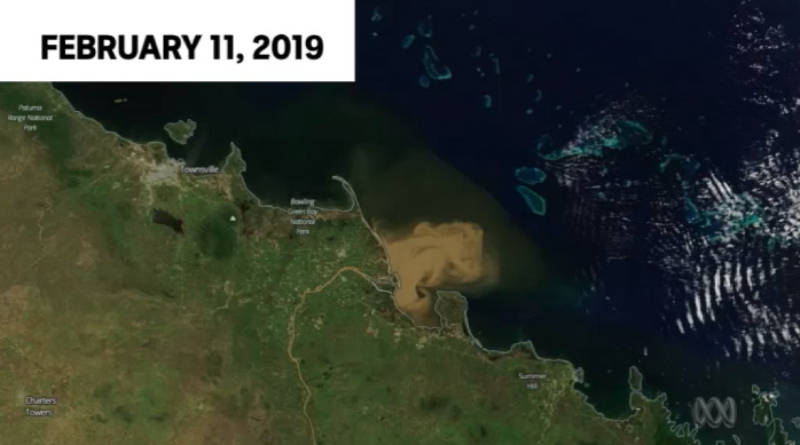Floods muddy the waters of Australia’s Great Barrier Reef
As some of you may be aware, Townsville (Australia) and the surrounding regions were recently hit by a monsoon which dumped an unprecedented 1.4m of rain in less than 2 weeks. The ensuing chaos saw the area officially declared as a disaster, and resulted in hundreds of millions of dollars of damage to property and livelihoods. All who live there have been impacted in many ways, and we wish them the greatest success with recovery efforts.
Yet the impact of floodwaters is not strictly limited to humans, with this unprecedented volume of fresh water having wide reaching effects on the regional ecosystems, which in light of other current stressors, could indeed be nothing short of a ‘disaster’. Townsville is one of the main access points to The Great Barrier Reef, the largest reef system in the world and one which is is currently suffering (and in some areas suffering greatly), from the effects of human induced climate change, back to back bleaching events, and invasion of Crown of Thorns Starfish. Townsville is also the location of many shallow, subtidal seagrass meadows that are extraordinary life supporting ecosystems in their own right.

So what exactly is the impact of flood water on on these two unique environments? Well, based on previous flooding events in the region, it is anticipated that there will be substantial impacts on seagrass meadows and inshore and fringing coral reefs. Those species that are reliant on seagrass as their primary food source, particularly green turtles and dugongs, are likely to be affected in those areas exposed to significant flooding. Previous flooding (Cyclone Yasi, 2011) saw a dramatic spike in the mortality of both species in the GBR. There is likely to be a time-lag of weeks to many months before, very sadly, we start to see these animals starving and dying.
In addition, floodwaters (literally) ‘muddy the waters’. “In years with much monsoonal rainfall, large fresh water flood plumes carrying sediment, nutrients, other pollutants and debris from the mainland enter the coastal zone and may reach out to the outer reefs of the Great Barrier Reef

threatening vulnerable corals”…”Flood plumes can have a number of effects on coral reefs. Large scale flooding can carry land-based pollutants such as insecticides, fertilisers and herbicides out to the reef. Fresh water can kill corals at shallow depths where mixing is low, and sediment in the water blocks light which the coral needs to survive.” – Australian Institute of Marine Science
Previous flooding has also seen chlorophyll plumes (phytoplankton responding to the extra nutrients in water) flowing across the continental shelf and into to the Coral Sea. Of this current flood, researchers have stated that the run-off is flowing as far as outer-shelf reefs 60 kilometres from the Queensland coast.

All this, on a reef system already weakened by increasing sea temperature, pollution and Crown of Thorns Starfish.. leaving it more susceptible to stress from flood plumes.
Is all of the above definite? We won’t know for sure the full effect of the current flood situation, but past inundations indicate that it’s not just humans that have a long recovery ahead. With so many of the world’s coral reefs degraded and/or dying, we can only hope that the flood debris does not linger too long nor damage too much, of the single largest reef system in the world.
(PS: On the upside… the monsoon brought with it some high cloud cover over and an influx of cooler water, which will provide a cooling effect and is likely to help mitigate the threat of any mass bleaching from thermal stress. Thank goodness for silver linings..)
Floodwaters flowing to Great Barrier Reef, Feb 2019
Image Source: ABC News Australia
Text: Lynn Lawrance
